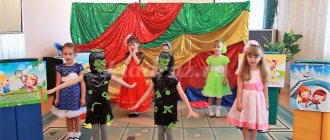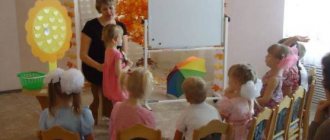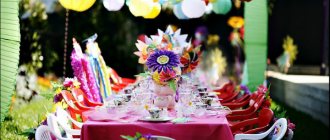Ballet "Cinderella" (1944)
Sergei Prokofiev
Arthur Rackham. Illustration for the fairy tale “Cinderella”. 1919 New York Public Library
Ballet based on the constant plot of the fairy tale by Charles Perrault. Exhausted by constant work, Cinderella (even her lyrical theme sounds tired) dreams of going to the ball, her nasty sisters Krivlyaka and Zlyuka quarrel over a shawl (their caricature and harmfulness are emphasized by the dryish orchestration and dissonances); The prince at first behaves arrogantly, but love transforms him: he appears at the ball to the thunder of fanfare, and as soon as he sees Cinderella, the music instantly changes to lyrical. The transformation of Cinderella, as it should be according to the plot, is led by the godmother, but the girl is dressed by a team of fairies of all seasons accompanied by a suite of dances. And, of course, at the ball all kinds of court dances are performed: paspier, bourre, mazurka, minuet. And in the middle of the holiday, when the guests are trying the treats, the orchestra plays a march. It had been composed by Prokofiev earlier for another work, the opera The Love for Three Oranges (1919). The love of Cinderella and the Prince arises to the sounds of the Great Waltz, but the clock strikes midnight: against the backdrop of tremolo violins and passages of clarinets, the xylophone and the knocking of a wooden block measure the time. Another reminder of the inexorability of time is the striking of the clock, which accompanies the entire ballet.
Performed by: Big Symphony Orchestra of the All-Union Radio and Central Television, Brass Band of the Bolshoi Theater, conductor Gennady Rozhdestvensky, soloists Arkady Futer and Mikhail Chernyakhovsky
Ballet "The Nutcracker" (1892)
Pyotr Tchaikovsky
Illustration for Hoffmann’s fairy tale “The Nutcracker and the Mouse King.” 1840 Staatsbibliothek Bamberg / Wikimedia Commons
One of the most famous Russian musical fairy tales is Pyotr Tchaikovsky's The Nutcracker, the composer's last ballet. The libretto for the story of Ernst Theodor Hoffmann's fairy tale “The Nutcracker and the Mouse King” was created by the famous choreographer Marius Petipa. The story of how Clara (or Marie) and the Nutcracker defeat the Mouse King and the Nutcracker is transformed into the Prince has become a Christmas classic.
In “The Nutcracker,” two worlds interact: the real one, whose characters are Clara-Marie’s family, and the fantastic one, where the Nutcracker, toys, a doll, the mouse king, the Sugar Plum Fairy and others appear among the characters. The real world is depicted by the composer using musically simple means: transparent orchestration with familiar timbres and classical dances - mazurka, waltz, gallop, polka - predominate here. The fantastic world is depicted completely differently, and it was in its creation that Tchaikovsky’s innovation was manifested.
Godfather Drosselmeyer opens the magical world; his appearance is accompanied by an interesting timbre combination of a melodious viola and two trombones. In the world of a fairy tale, a struggle between good and evil arises, which, of course, is reflected in the music. Ideas of goodness are characterized by soft timbre sounds. The passages of the flute, the lulling play of the harp, and the sparkling ringing of the celesta, a new instrument at that time, predominate here. The Celeste is a keyboard and percussion instrument similar to a miniature piano, but with metal or glass plates inside. The sound is similar to the ringing of crystal bells (the name celesta is translated from Italian as “heavenly”). The ideas of evil are shown with the help of a completely different orchestration, which is characterized by a lower register, with the participation of bass clarinet and tuba. The ominous rustling of the Mouse King's army is shown through a march performed by bassoons and low strings. In the magical world, the dances are different: the Spanish chocolate dance, the Arabic coffee dance, the Chinese tea dance and, of course, the mysterious “Waltz of the Flowers”.
Performed by: Berlin Philharmonic Orchestra, conductor Semyon Bychkov
Symphonic tale “Peter and the Wolf” (1936)
Sergei Prokofiev
Cover of the score of the fairy tale “Peter and the Wolf”. 1959 © “Muzgiz”
Sergei Prokofiev wrote a musical symphonic fairy tale especially for the Moscow Children's Theater. The main character of the fairy tale is ten-year-old Petya, a brave pioneer - the winner of the Wolf, who defeated him before the Hunters appeared. Usually a fairy tale is performed like this: the narrator reads the text, and the orchestra voices everything that happens in it.
The theme of each character is played by one instrument or a group of similar timbre instruments of a symphony orchestra. For example, Grandfather, dissatisfied with the fact that his grandson left the gate without permission, is depicted by a low woodwind instrument - a bassoon; the fearless Petya is a string quartet (two parts of violins, violas and cellos), and his friend and assistant Ptichka is a flute, which best conveys the flutter of small wings and ringing trills.
The character of Petya’s main enemy, the Wolf, is conveyed by brass instruments, the most powerful and loudest in the orchestra. In the low register, three horns play heavy chords in a minor key. The Bird also has ill-wishers: the Cat, whose creeping gait is conveyed by the clarinet, and the arrogant and arrogant Duck. At the moment of the argument between the Duck and the Bird about who is the real bird, two themes are heard simultaneously in the orchestra: the whistling passages of the flute depict the Bird’s singing, and the Duck’s quack is conveyed by another woodwind instrument - the oboe. Although the Duck boasted, it ran too slowly, and the fast Wolf swallowed it as it went. But the Wolf could not escape from Petya: the boy caught him and, with the help of the Hunters, sent him to the Zoological Museum. The tale ends with a solemn procession of the winners, in which the themes of all the heroes are heard in turn.
Performed by: State Academic Symphony Orchestra of the USSR, conductor Evgeny Svetlanov, text read by Natalia Sats
Ballet "The Firebird" (1909–1910)
Igor Stravinsky
Lev Bakst. Ivan Tsarevich and the Firebird. 1915 Wikimedia Commons
Igor Stravinsky wrote “The Firebird” commissioned by Sergei Diaghilev for the Russian Seasons. The libretto, created by the outstanding choreographer Mikhail Fokin, is based on the plots of several folk tales (about Tsarevich Ivan, the Firebird and the Gray Wolf, about Koshchei the Immortal and the Princess Beloved Beauty) and one author’s - “Night Dances” by Sologub. In pursuit of the Firebird, Ivan Tsarevich ends up in a wonderful garden. There he sees the heroes whom Koschey the Immortal turned to stone because they tried to save the brides he had stolen. Now the princess brides live in Koshchei’s castle and go out into the garden to play. With them is the Beloved Beauty, with whom Ivan Tsarevich falls in love. Koshchei's enraged servants grab Ivan, who ran after the princesses, but he manages to escape thanks to the dazzling light from the Firebird's feather. So the spell of the evil kingdom is broken, and a Christian city arises in its place. The enchanted heroes come to life and find their brides, and Ivan Tsarevich - now the ruler of the new city - marries Beloved Beauty.
Three fairy-tale worlds coexist in the ballet: the dark kingdom of Koshchei, a wonderful garden with golden apples and a Christian city with domes. Koshcheevo’s army begins the “Filthy Dance” with characteristic rhythmic interruptions and bright whistles of the piccolo flute; the appearance of the Firebird is accompanied by the gentle melodies of a lullaby performed by woodwind and string instruments. In the round dance of the princesses, Stravinsky uses a quote from the Russian folk song “As in a kindergarten, a kindergarten,” and in the joyful finale - from the song “It was not the pine tree that swayed at the gate.”
Performed by: Columbia Symphony Orchestra, conductor Igor Stravinsky
Ballet “The Little Humpbacked Horse” (1955)
Rodion Shchedrin
Scenery sketch for the ballet “The Little Humpbacked Horse”. 1939 © Heritage Images / Fine Art Images / DIOMEDIA
The first ballet by composer Rodion Shchedrin was written based on the fairy tale “The Little Humpbacked Horse” by Pyotr Ershov. From the opening bars, the music has an atmosphere of a national holiday. The trumpets and horns take turns leading the action through a fast opening theme that captures the endless hubbub of the crowd. The melody of a dance sounds with a typical Russian stomp. The ditty genre is widely represented in the fairy tale-ballet: here are the energetic melodies in the scene of Ivan with his brothers, and the choruses composed by Shchedrin in the “Girls’ Round Dance”. The composer included a large number of percussion instruments in the orchestra: bells, bells, bells, triangle, drums, timpani, and rattles.
Three scenes of the first act introduce us to the main characters of the ballet. Under the “balalaika” accompaniment of bassoons and low string instruments, the leitmotif of Ivan’s brothers appears. The brothers have the same theme, since Danila and Gavrila are alike in everything. This is a heavy, angular theme with precise rhythm, accents and repetitions: the brothers are stubborn and arrogant.
Little Horse is not so much magical as he is savvy and has his own mind. The Horse's Theme is played by the piccolo flute and bells. It is similar to the leitmotif of Ivan himself, whom Konek helps in everything. The Tsar Maiden is characterized by several themes. Her first leitmotif is a call theme with incredibly colorful orchestration; this melody connects the heroine with the fantastic world of this ballet. And the second leitmotif of the Tsar Maiden appears after the meeting with Ivan. She becomes a Russian heroine - a lullaby sounds, borrowed by the composer from Lyadov’s collection “Songs of the Russian People”.
The ballet ends with a merry celebration with the ringing of bells. The young people are called Ivan and the Tsar Maiden. Young people lead round dances: the smooth Russian dance of the bride is replaced by the youthful dance of the groom. The theme of the Little Humpbacked Horse accompanies the general fun.
Performed by: Orchestra of the Moscow Academic Musical Theater named after. K. S. Stanislavsky and Vl. I. Nemirovich-Danchenko, conductor Georgy Zhemchuzhin
Opera “The Tale of Tsar Saltan” (1900)
Nikolai Rimsky-Korsakov
Ivan Bilibin. Illustration for “The Tale of Tsar Saltan.” 1905 Wikimedia Commons
“The Tale of Tsar Saltan,” written by Rimsky-Korsakov for the centenary of Pushkin’s birth, is one of the richest operas in terms of variety of orchestral colors. The action takes place in Tmutarakan and in the city of Ledenets on Buyan Island. The story about the city is accompanied by a solemn bell theme. Three miracles from Pushkin's text are shown in the introduction before the last scene of the opera. The squirrel with golden nuts is represented in the orchestra by the theme of the folk song “Whether in the garden or in the vegetable garden” performed by the piccolo flute. The sea heroes and uncle Chernomor are marching: the same motif is repeated in the bass with increasing volume. And the main miracle is the Swan Princess. The enchanting whimsical melody gradually develops into a melodious theme, illustrating the magical transformation of a swan into a beautiful Princess. The Swan Princess helps Prince Guidon in everything: for example, she turns him into a bumblebee so that he can go to Tmutarakan and see his father. It is here that the famous virtuoso melody of the flight of the bumblebee sounds in the opera.
Performed by: Bolshoi Theater Symphony Orchestra and Choir, conductor Vasily Nebolsin, soloists Ivan Petrov, Evgenia Smolenskaya





